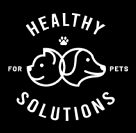.jpg)
Our pets are a big source of strength, support, and joy for us. But in return, we have a big responsibility to take care of them first.
In this article, we’re going to discuss five pet health categories to keep your furry friend happy, healthy, and sticking with you through it all.
1. Seek Preventative Care with Your Veterinarian
In the last few years, human urgent care centers have popped up all over the country. What makes them so successful? It’s common for us humans to avoid making trips to the doctor until something is wrong. And even if something really mild happens, like a head cold, a stomach virus, or an ankle sprain, we’ll typically wait it out until it clears up or gets worse.
One argument to make to support this mentality is that we know our own bodies and can trust them to tell us when something is wrong. But with pets, they may actually try to hide signs of illness for as long as possible. Why? It’s their instinct. While thousands of years removed from their wild ancestors, dogs and cats retain a lot of those instincts. Hiding signs of pain or discomfort can mean avoiding getting preyed upon or kicked out of the pack.
For our pets, this means that catching illnesses early is extremely important. They can’t tell us what’s going on, so we have to check. That’s why having your dog or cat seen by your vet at least once a year is an integral part of preventative health.
Your vet can advise you on healthy weight and feeding practices to prevent obesity, evaluate joint health and function, answer questions about behavior, and make recommendations for better dental health and care. Sometimes, we can even catch signs of cancer early, while there’s still time to intervene.
Running labwork annually helps to screen for early signs of kidney and liver disease, presence of infection, and infectious diseases like Lyme disease, that may not be presenting with obvious symptoms.
Now, generally, we hope our exam findings will be pretty unremarkable and that our labwork will be normal. Don’t be discouraged if everything comes back normal or feel that it wasn’t worth doing–no news is great news!
For our senior pets, because they are far more likely to be developing chronic diseases like organ dysfunction and arthritis, getting exams and labwork done every 6 months helps to keep a closer eye on things.
.jpg)
2. Maintain a Healthy Diet
Hippocrates, the Greek Philosopher said: “Let food be thy medicine, and medicine be thy food”.
Diet trends are immensely popular with people, leading to billions of dollars in sales of menus, cookbooks, and self-help guides. Whole sections of grocery stores are devoted to organic produce and products as a result of the public demand. All of these aspects highlight how important food and diet are to us, and this is no less important for our pets.
There is an insurmountable host of diet choices out there, and just as much marketing to go along with them. How do you know what to choose? Is a commercial diet safe? Is home-cooking just as good? Let’s chat about those points a little bit.
Countless Kibbles
Commercial diets have been a mainstay of pet nutrition for decades, but in matching some diet trends, there are even more choices than ever.
In fact, there are so many choices and variability, that some folks wonder if they’re necessary at all. But if you look at what pets were fed before commercial diets existed, what did dogs eat? It’s not like they were hunting naturally in the wild and then suddenly fed kibble. Before commercial food, dogs were either fed leftovers from whatever people ate or they had something rudimentary cooked for them at home. Not much was known about pet nutrition even in the early 20th century, so it would be a mistake to assume that these diets were somehow superior.
Nutritional causes of illness in pets were far more common, from rickets in dogs with Vitamin D deficiency to amino acid deficiency-related heart disease in cats. These diseases have become rarities in more recent decades. Why? Because good commercial diets with fully balanced nutrient profiles keep these deficiencies from occurring.
But this doesn’t mean all commercial diets are good. You still have to be discerning. Look for the Association of American Feed Control Officials (AAFCO) statement on the packaging. The statement means that the diet meets nutritional requirements for a particular life stage. This is either through a formulation meeting accepted nutritional standards, through diet trials, or via a combination of the two.
Aim for diets with high protein and high fiber, but low in carbs, especially for cats. This combination can help to maintain a leaner body weight. And when looking at the kilocalories per cup or can, aim for less than 400kcal. A diet lower in caloric density means that your pup or kitty can eat more volume while consuming fewer calories, and feel more satisfied, which helps to avoid excessive weight gain.
Recalls are a scary prospect with commercial diets to be sure, but they are fortunately rare and don’t only occur with pet foods. The FDA keeps a close eye on quality control and keeps the most updated list of any recalled foods, whether voluntary or involuntary, and the reasons why.
Culinary Creativity
Largely because of recall concerns and also because of the saturation in the market of pet foods, some pet parents have turned to cooking at home, because they feel like they have better control over what goes into their pet’s bodies. The act of cooking can also be regarded as a labor of love, and feels rewarding.
But while cooking for ourselves is somewhat straightforward, cooking for pets is more difficult, because nutritional deficiencies can easily occur. This is especially true for cats. In May 2019, an article published in the Journal of the American Veterinary Medical Association found that of 114 home-cooked diet recipes for cats (found all over from online to cookbooks to textbooks), nutritional deficiencies were found in every single one, when evaluated by the veterinary nutrition clinical staff at UC Davis.
And while dogs don’t have quite as restrictive requirements as cats do, it is very easy to miss out on nutrients like certain vitamins, minerals, and essential fatty acids for them too.
If home-cooking for your dog, it’s important to consult with your veterinarian, as there are ways we have of helping to formulate diets adequately based on certain ingredients. But when it comes to cats, even diets crafted by your average home-town veterinarian had nutrient issues in the UC Davis study, which highlights how difficult and complex cat requirements are. In this case, it’s best to consult with a board-certified veterinary nutritionist, and your vet should be able to help you get in touch with one.
.jpg)
Fresh and Waiting at Your Door
Freshly-prepared home delivery diets are newer on the market, but increasing in popularity. Essentially, the ingredients are made fresh every week, packaged in coolers and shipped out for folks to immediately open and feed. Examples include NomNomNow and Ollie.
These are attractive because of their “human grade” ingredients and appearance very similar to that of something that we humans would eat.
I actually think these are a great alternative option to commercial diets for folks that are inclined to look for fresher, more “visually appealing” options. I have also recommended this diet type as an alternative option for folks interested in home-cooking. Essentially, these diets contain much of the appeal of home-cooked diets with fresh ingredients, but without the cooking work and risk for nutrient deficiencies.
But there’s one caveat to these types of diets: you should only look for diets that have been formulated by a board-certified veterinary nutritionist. If this is the case, as with NomNomNow for example, then we can be assured that all nutritional requirements are being met. If you’re not sure and can’t find out on the website, touch base with the company and ask.
The Raw Truth
Raw food diets have increased in popularity over the last decade. Largely, this has come about from a combination of claims of superior nutrition with no processing along with claims that we need to “get back to nature” and feed our pets “ancestral” diets because this is more “natural”.
However, while freshly-prepared food is one thing, raw food is completely another and there are several reasons why most veterinarians are not proponents of these diets.
First and foremost, contamination with harmful bacteria like Salmonella, E. coli, and Listeria are a significant concern not just for your dog, but your family as well. If you look at the FDA recall list, you will see several raw pet foods recalled for this reason over the last few months. These bacteria can all cause serious illness in people and handling any kind of raw food increases this risk significantly.
Another reason to avoid raw foods is that the claims of superior nutrition have yet to be substantiated. There are no scientific studies in pets that support their use for any nutritional or medical purpose.
Dr. Ernie Ward, a well-known veterinary contributor, pet advocate, and co-founder of the Association for Pet Obesity Prevention (APOP) discusses raw foods in a book he co-authored, The Clean Pet Food Revolution. In it, he refers to raw pet food health claims of “more frequent poops” and a “shinier coat”. But while the raw food industry touts these “benefits” as being from the nutritional superiority of raw food, Dr. Ward attributes “more frequent poops” to low fiber content and a “shinier coat” to a diet higher in fat that increases the risk for obesity.
He also addresses the clever marketing behind raw food diets that encourages pet parents to feed the “wolf” inside their pup, or the “tiger” inside their kitty with an “ancestral” diet they were “meant” to eat.
But Dr. Ward points out that there’s nothing natural about contemporary raw food diets. Even if you purchased raw beef at the grocery store, this food still needs preservatives and packaging to be shipped. And because of how meat is handled and shipped, bacterial contamination is always a worry with any raw food. True wild carnivores kill their food and eat it immediately, which eliminates the risk of contamination.
And as for the types of meat products in raw food being derived from cattle, pigs, chickens, tuna and salmon? “Ancient wolves and dogs had virtually no chance of eating these animals, making them a poor choice as ‘biologically appropriate’” says Dr. Ward.
Getting to the Heart of Grain-Free
Grain free foods are another popular diet trend that emerged several years ago. They have been touted as far healthier and a cure-all for anything from digestive issues to skin allergies.
However, grain-free diets didn’t come about from any studies demonstrating that they treated or prevented any types of illnesses. They came about for two other reasons.
First, back in 2007, the industrial chemical melamine was found in products unscrupulously and incorrectly labeled as wheat gluten and rice protein from China that were then being added into pet foods. This illegal contamination led to 14 animals dying from kidney failure, though more cases are suspected to have occurred that went unreported. This terrible crisis led to a fear of wheat and rice products in pet foods, making foods without “grains” more popular.
The second reason stems largely from the human diet trend of avoiding dietary wheat gluten and a desire to feed pets in a similar fashion.
Many pet parents will feed grain free because they feel it’s healthier and some tout the benefits of fewer digestive issues or improvement of their pet’s skin allergies. But the term “grain allergy” is very misleading. You can only develop an allergy to a protein. And while wheat gluten is a protein (found in wheat, barley, rye, and oats), most pets are thought to have food allergies primarily to chicken or beef protein with other meat proteins less commonly. An actual allergy to wheat gluten in pets is thought to be rare.
More likely than not, if a pet parent notices that some dietary issues have improved or their pup’s skin looks less itchy, the improvement is based on a change to the dietary protein source (as many grain free foods have more novel protein sources like duck, venison, salmon, etc) and not from the absence of grains.
Some pet parents also feed grain-free because they believe that “no grains” is the same thing as “no carbs” and thus their pet is likely to lose weight on a “low carb diet”. But this is also misleading as grain-free foods still have carbs, just in another form, like potatoes.
For some time, veterinarians felt these foods were overpriced and unnecessary, but generally harmless. But in 2018, a large veterinary cardiology group reported concerning findings to the FDA that they were seeing a trend of increasing cases of a heart condition called dilated cardiomyopathy in dogs that weren’t thought to be genetically predisposed. Statistically, a majority of these dogs were on boutique grain-free foods.
Thus, most veterinarians now recommend avoiding grain-free diets because of this risk paired with no proven nutritional benefits. If you feel that your pup or kitty really has improved in some way on a grain-free food, it’s best to discuss the risks and benefits with your veterinarian.
So in summary for diet, it’s important to be comfortable with what you feed your pet, but don’t feed based on ideology at the cost of a proper nutritionally balanced diet. Make sure to touch base with your veterinarian about his or her recommendations for diets based on your pet’s age, activity level, and any current health concerns.
3. Keep Your Pet at a Healthy Weight
Coming right off of the heels of our diet discussion, let’s chat about healthy weight. According to the Association for Pet Obesity Prevention (APOP), more than half of dogs and cats in the United States are classified as overweight or obese. And we know that obesity leads to shorter life-spans and poorer health. In fact, Dr. Ernie Ward, co-founder of APOP, advocates thinking of pet obesity as a disease process like any other we treat, and when you think about the detriment obesity causes, it’s easy to see why.
Excessive weight adds a lot of stress and strain on the body, putting the body in a constant state of unhealthy inflammation. Extra weight also puts more stress on joints, leading to acceleration of arthritis symptoms and declining mobility at an earlier age.
Checking in on Weight
First, how do you know if your pet is a healthy weight or not? Here’s some simple guidelines to use. First, look at her from the top down. She should have a narrowing behind her ribs towards the swell of the hips. From the side, you should be able to see a slight belly tuck up towards the groin. And while it shouldn’t be too easy to see ribs, you should be able to feel the last 2 or 3 using gentle pressure. If your pet looks “square” or “boxy” from the top and sides, she’s definitely overweight. If she actually looks rotund or “pooches out”, we’re likely looking at obesity.
Now, these are just general guidelines that help us to determine a pet’s “body condition”. We usually rate a cat or dog’s body condition on a scale from 1 to 9. An ideal for a dog or cat is usually around a 4 or 5. This is a fairly subjective system and I find that many pet parents incorrectly give their pet a better score than they actually should have. Thus, to get a true assessment of your pet’s weight health, ask your vet to go over your pet’s body condition with you.
How to Shed the Pounds
What can we do about weight? Well, the most important thing to start with, whether we’re just trying to keep a pup or kitty at the same weight or if we’re trying to get them to actually lose some pounds, is to know how much we’re feeding per day.
Meal feeding is extremely important to be able to know how many calories a pet is getting each day. It’s common to just refill the bowl when it’s empty or when our fur baby asks for more, especially with cats. But this simply encourages an unhealthy behavior.
Your vet can help you determine the calorie needs for your pet each day, but here’s a tip to follow to start you out. If you take your pet’s weight in pounds and divide by 2.2, you’ll get his weight in kilograms. Now multiply this by 30, then add 70. This will get a basic calorie amount needed per day, called the resting energy requirement (RER). You do need to modify this number for activity level, so If you have a puppy, you should double this number. If you have a pretty active dog, multiply by 1.5. If you have an overweight dog, multiply by 0.8 for some weight loss.
You can take this final number and divide it by the kilocalories per cup or can listed on your food packaging. Your vet can help you refine this strategy, but this is at least a starting point to see how many calories you’re feeding per day compared with your pet’s needs.
The next important point is exercise. For dogs, this means at least two fifteen minute walks per day. For cats this is a little trickier, but you can aim for 3 short 5-minute play sessions per day.
Now, weight loss isn’t always as simple as decreasing food amounts and increasing exercise. It’s also important to make sure that your pet’s food is lower in carbohydrates and higher in protein and fiber. If you have a pet that’s overweight and you’re trying to get him to lose some, look for a food with a calorie density of less than 350 kilocalories. These foods are often higher in dietary fiber, which helps a pet feel more full while receiving fewer calories.
And make sure that you include treats and any other supplements you provide your pets in the total calorie amount. I once had a pup parent who top-dressed her Great Pyrenees’ food with coconut oil to help his skin, coat, and joints. But she didn’t realize that coconut oil has calories in it and we found that reducing the amounts led to some dramatic weight loss results!
Lastly, if you know you’re being strict with feeding, you have an active pet, and you’re still seeing weight issues, make sure to consult with your vet. Especially in dogs, we can see some metabolic or endocrine conditions, like hypothyroidism, that can lead to continued weight gain. We have ways of testing for these conditions and counseling pet parents on how to address them.
.jpg)
4. Keep a Close Eye on Your Pet’s Environment
Environment has a huge impact on our own health, as well as pet health. And this includes not just how the outdoor and indoor environment affect physical health, but how both influence a pet’s behavior and emotional well-being.
Physical Health Ins and Outs
First though, let’s chat about physical health. For our indoor environment, we want to make sure that anything a pet might be interested in inappropriately ingesting is well out of reach. This includes certain foods like chocolate, raisins, grapes, and onions. This also includes any human or pet medications, irresistible clothing like socks and underwear, rubber bands, hair bands, and anything in between.
Household plants can also be an issue. Poinsettias for example, have a stomach irritant in their milky sap that can cause vomiting if ingested. Other problem plants include sago palm and lilies. For a more complete list, check out ASPCA Animal Poison Control, where you can also find a comprehensive list of problematic foods, household cleaners and other products that can cause harm if ingested.
Now look at your outdoor environment. If you live in a rural setting with exposure to wildlife, there are many infectious agents, like leptospirosis and tick-transmitted diseases like Lyme, that can be more easily transmitted thanks to deer, foxes, raccoons, and others.
In urban environments, some of these are still a concern thanks to heavy rodent populations (and raccoons, deer, and foxes are no strangers to suburbia), but we also have to think about vehicular traffic and heavier populations of other pets. Hit-by-car incidents are more common the more cars there are. Outbreaks of canine influenza and other communicable diseases are more likely to get a foothold in areas with dense pet populations, making any possible preventative care more important.
Mental Health Ups and Downs
And now looking at our mental and emotional health as it pertains to our environment. If you’re absent for long periods of time during the day, you do have to think about how your pet is left during the day is contributing to any stress or anxiety.
Separation anxiety is a disorder frequently diagnosed in dogs. If you get home from work to find your dog has destroyed a number of items throughout the house, this can be a sign. Is your pup well crate-trained? Sometimes using the crate is a good environment for anxious pups to actually feel safer.
But others may have anxiety whether a crate is used or not. In this case, would it be better for your pup to go to daycare and be able to play and run with other dogs, or at least have a walker/sitter come by to take him out?
If you have a cat that urinates in the house, or that your vet has diagnosed with stress-related urinary behavior, there are a number of environmental enrichment tools we can use to help. Having perches in windows for indoor cats to be able to appreciate the great outdoors from inside can reduce stress for many kitties.
Also make sure your cat has playtime. There are products, like the Doc and Phoebe’s Cat Co. Indoor Hunting Cat Feeder Kit, that allow you to hide small amounts of food inside a toy, which is then hidden in different places around the house. If your kitty does have stress urinary issues to boot, you can instead use beneficial urinary health treats like Cranberry Plus or anxiety relief treats like Calm Down. The act of your kitty hunting for the yummy-filled toy creates environmental stimulation and increases activity level.
For both cats and dogs exhibiting stress, consider if you live near any loud noises, like heavy traffic, construction, etc. Loud sudden noises can be very stressful for pets, since their hearing capability is far beyond our own. Using white noise machines or leaving soothing music on can help suppress some of those auditory afflictions.
Not sure how or what your pet does when you’re not home? Look into getting a camera that you can link up to your phone. There are many very affordable options that come with their own app so that you can check into the feed at any time and see what your pup or kitty is up to.
5. Ensure Your Pet Has Good Training and Conditioning Early
We’ve focused a lot on physical health, but behavioral health is just as important. Chronic stress has been documented to lead to physical health problems in people, and the same goes for pet health in our pups and kitties as well.
We’ve already mentioned the abnormal urinary behavior we can see in cats related to underlying stress. We can also see physical signs of stress in dogs too, like digestive issues.
Exposure to the Elements (of Life)
Sometimes these stressors in adult dogs come from poor training and conditioning early in life. We tend to see this a lot in rescues who may not have been abused per se, but probably were neglected, not socialized well, and received no formal training.
The period of time from 8 weeks up to 6 months is a crucial period for training and socialization. Many dogs, and even cats, can develop fear anxieties to things they haven’t been exposed to or don’t understand.
Try taking a dog who grew up in Florida and plop him down in a snow bank in Michigan. It’s interesting watching a dog who hasn’t seen snow before. Puppies tend to just go for it since everything new in their environment is a new adventure. But adult dogs can show some pretty significant signs of fear since they have no idea what snow is.
Granted, this is a lighthearted look at how a fear can develop from a lack of exposure to something. But poor socialization can have a more grim reality. If a puppy hasn’t been around people, other dogs, or other animals very much or at all, or if a single experience was very negative, this can be extremely difficult to reverse later in life.
Thus, when you first have a puppy, make sure to socialize him with other calm, older dogs to help learn some appropriate behaviors. A family, friend, or neighbor’s dog is fine as long as their pup is healthy and appropriately vaccinated. Get him to know people, be around (responsible and well-behaved) children, and what it’s like to be in busy environments.
Taking your young puppy to a dog park to mix with random dogs is not advisable, both from a communicable disease standpoint as well as the unpredictability and high likelihood for negative experiences that can occur at dog parks. But a trip to the hardware store (Lowe’s and Home Depot both welcome dogs) or the pet store can be helpful for exposure to busy places, as long as we limit interaction with unknown pets before our vaccines are fully boostered.
But socializing doesn’t just go for other dogs, cats, or people. Make sure that any other animal types that you want your pet to be around, like horses for example, become a part of socialization. This also goes for objects and locations too. Any kind of equipment you need your dog to be comfortable around, or any place you plan to take her to regularly, needs to be a part of her early development.
And this includes the vet. We see many fearful pets at the vet and some of that can stem from the only experiences they have there being shots and nail trims. Most clinics have no problem with you dropping by with your pet for a friendly visit to have a treat, maybe get on the weight scale, have a couple staff members gush over them, and then leave. These “happy” visits can help reduce the association a pet can have between the vet and discomfort.
Pursuing Fear Free Certification for vet practices is also becoming more common. Fear Free is a movement to help any human involved with care of pets find ways to reduce fear and anxiety in situations where we work with them. This can be the vet, the groomer, or even at home. Vet practices have the ability to pursue training and then become certified as a Fear Free practice. You can always ask any new prospective hospital you are considering if they have pursued this certification.
Grooming Good Habits
Lastly, conditioning pets to some of those common grooming practices like nail trims and teeth brushing can really help improve health and reduce stress by allowing you to do more of this at home.
Many vet practices will include complimentary nail trims for kittens and puppies to help them get used to having their nails trimmed in a positive atmosphere. But it’s important for you to continue this at home by conditioning your pet to having their feet and toes handled regularly.
It helps to start teeth brushing practices early too. While puppies and kittens will lose their baby teeth by 7 months of age, engaging in brushing early helps to make it easier when they are adults and start to develop noticeable dental tartar. Good brushing can keep teeth and gums healthier longer, leading to fewer necessary dental cleaning procedures under anesthesia, which would bring a sigh of relief to many a pet parent.
If you have concerns about how your pup or kitty is doing with early development, make sure to consult with your vet. He or she can help recommend a good in-home trainer to help you with your puppy, and provide some useful training tips for your kitten.
More Questions About Your Pet’s Health? Ask Your Vet!
There are a lot of aspects that contribute to good pet care and keeping our fur babies healthy–too many to fully cover in one article. After all, whole books are written on the subject of pet care. But these main categories are a good start, and cover many bases discussed with pet parents during vet appointments.
Your veterinarian is the best resource for specific questions about your pet’s health since he or she knows your pet the best. And since an overwhelming majority of veterinarians are pet parents too, we understand how important your pets are to you and your family. So keep your pup or kitty’s doc in the loop to ensure a happy and healthy condition and to keep that bond you share with your furry friend strong.
About Us
We've taken the guesswork out of caring for your pets. Our formulations are created by experienced veterinarians to address specific solutions for a variety of pet issues.
All of our products are:
As seen on:











